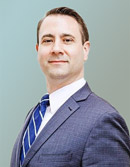Below you will find a real life case study of an individual who is looking for financial advice on how best to arrange their financial affairs. Their name and details have been changed to protect their identity. The Globe and Mail often seeks the advice of our VP, Wealth Advisor, Matthew Ardrey, to review and analyze the situation and then provide his solutions to the participants.
![]()
Written by:
Special to The Globe and Mail
Published April 26, 2019
 After a long and successful career, Ellen has retired from consulting and is winding down her corporation. She is 72, single and well off.
After a long and successful career, Ellen has retired from consulting and is winding down her corporation. She is 72, single and well off.
Still, she has concerns. She has roughly $1.8-million in savings and investments, the lion’s share of which is in stocks. She does her own investing, choosing stocks that pay steady and rising dividends with good management and solid earnings.
“I understand the risk is high,” Ellen writes in an e-mail. “If a recession like the one in 2008 hits, it will greatly reduce the asset value,” she adds. “Any advice on the portfolio and risk management would be much appreciated.”
Ellen is healthy and active and aims to do her best to stay that way so she can continue to travel extensively. Yet aging will impose constrains on travel, Ellen acknowledges, so she’ll likely be spending less on travel over time. “Other emerging issues,” such as health care, will increase the demands on her savings in her later years.
She is concerned about having enough money to “live in a first-rate senior residence and eventually a first-rate nursing home if necessary,” Ellen writes. Her retirement spending target is $65,000 a year after tax, although her actual spending is lower.
We asked Matthew Ardrey, vice-president of TriDelta Financial in Toronto, an investment counselling firm, to look at Ellen’s situation.
What the expert says
First, Mr. Ardrey looks at Ellen’s income. She plans to wind the corporate account down over 10 years to minimize the taxes owing on the withdrawals. To do this, she will need to withdraw about $38,500 a year, which will be taken as taxable dividends. She had been drawing a bit less than $10,000, so this will increase her income.
Ellen gets $7,121 in Old Age Securities benefits and $7,872 in Canada Pension Plan benefits, numbers that will rise in line with inflation. She also makes mandatory minimum withdrawals from her registered retirement income fund (RRIF) and receives dividends from the stocks in her taxable investment accounts.
Ellen’s lifestyle spending is $40,500 a year, plus $10,000 a year for travel. Her only savings is the maximum annual contribution to her tax-free savings account (TFSA).
Looking ahead, Ellen figures she’ll sell her Toronto condo when she is 80 or so and move into a high-end retirement residence that will allow her to transition onsite to a nursing home if need be, Mr. Ardrey says. In drawing up his forecast, he assumes she sells the condo for $589,000 at the age of 80, minus 10 per cent for selling costs, and the balance is added to her investment portfolio. Her living costs rise from about $50,000 to $72,000 a year in current-year dollars.
Now for her portfolio. A full 97 per cent of Ellen’s investment assets are in stocks. If she leaves it as is, she could earn 6.4 per cent a year on average, the planner estimates. He assumes an inflation rate of 2 per cent a year.
“Based on these factors, Ellen will have more than enough to retire,” Mr. Ardrey writes. “In fact, she has a substantial financial cushion.” To illustrate, if she keeps her spending roughly the same, she would leave an estate of $3.4-million at the age of 90, he says. If she wanted to spend it all, she could increase her spending by a whopping $90,000 a year, more than double what she is spending now. That would mean an increase in her current spending from $50,000 to $140,000, and her spending after she moves into a retirement home from $72,000 to $162,000.
Still, the plan as it stands has considerable risk, Mr. Ardrey says. Of the 97 per cent in stocks, Ellen has 6 per cent in one U.S. holding. The remaining 93 per cent is in Canadian stocks. Seventy per cent of her holdings is invested in just four stocks.
If the stock market dropped in the near future the way it did in 2008-09, “it could have a substantial impact on her portfolio and her retirement plans,” Mr. Ardrey says. The main Toronto stock index lost 35 per cent of its value in 2008 and did not return to its former high until 2014, he notes.
To help manage risk, the planner suggests a portfolio that is diversified geographically and by sectors. He also recommends asset class diversification by adding both fixed-income (bonds) and alternative income investments that are carefully vetted by an investment counsel firm for sale to its clients.
“The ones we would recommend for Ellen are more on the conservative side, focusing on income-generation strategies through private debt, accounts receivable factoring and global real estate,” Mr. Ardrey says. “These strategies have been shown to add value to portfolios by increasing returns over traditional fixed income while having little to no correlation to stock markets.”
If Ellen shifts to a portfolio of 50-per-cent stocks, 20-per-cent fixed income and 30-per-cent alternative income, she could expect a rate of return of about 6.5 per cent a year, the planner says. “She would be earning that return with substantially less risk.” She would have investment costs of about 1.25 per cent, 60 per cent of which would be tax-deductible in her non-registered and corporate accounts, he says.
She’d leave an estate of $2.7-million, or if she wanted to spend it all, she could increase her spending by $81,000 a year. That would mean an increase in her current spending to $131,000 a year, and her spending after she moves into a retirement home to $153,000.
“Ellen is in excellent shape to enjoy her retirement,” Mr. Ardrey says. “In fact, I would encourage her to enjoy it more!”
Client situation
The person: Ellen, 72
The problem: How to reduce the risk in her overly concentrated portfolio.
The plan: Diversify by country, industry and asset class. Cut stock holdings and add fixed-income and alternative income securities.
The payoff: Greater peace of mind.
Monthly net income: $6,655
Assets: Cash and short-term $16,180; taxable investment accounts $679,506; corporate account $310,579; TFSA $98,426; RRIF $680,627; condo $505,000. Total: $2.29-million
Monthly outlays: Property tax $240; home insurance $30; utilities $70; condo fee $645; handyman $40; transportation $490; groceries $250; clothing $430; gifts, charity $90; vacation, travel $800; personal care $300; dining, drinks, entertainment $285; subscriptions $31; study courses $100; health care $190; phones, internet, TV $179; TFSA $500. Total: $4,670. Surplus of $1,985 goes to travel, spending that might be underestimated and investment account.
Liabilities: None
Want a free financial facelift? E-mail finfacelift@gmail.com.
Some details may be changed to protect the privacy of the persons profiled.

